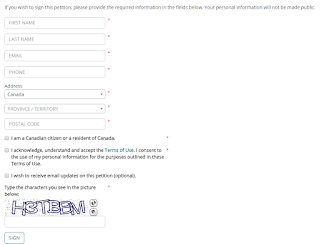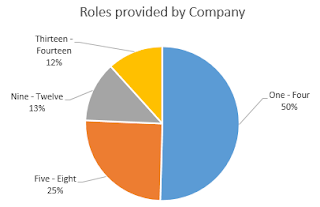Australians might be surprised to learn that the Australian parliament only
agreed to formally accept ePetitions in July 2015.
That was five years after it was formally recommended to parliament and follows a trend towards epetitions set by other digitally advanced democratic nations, such as the UK and USA.
However, unfortunately for Australians, the model used for Australia doesn't measure up well.
UK - ePetitions

The UK's epetitions site launched in August 2011 at
petition.parliament.uk and has been restructured several times over the last five years.
Today it is a sleek, easy to access platform that hides all the technical mechanics the UK parliament requires for petitions behind a usable and simple step-by-step process.
It's very simple to find and sign a petition, with the process for responses explained clearly on each petition's page.

Sharing tools are embedded to make it simple to encourage others to sign. It's easy to view signatures geographically by electorate (great for parliamentarians and respondents alike).
The data for each petition is immediately available via a standards-compliant data format.
The process for creating new petitions is also simple and seamless.
It uses plain English and employs a range of assistive approaches to ease first-time petitioners through the process. This includes examples of how to write a petition and flagging information that will be required in later steps so the petitioner can pre-prepare.

The site uses text matching to find similar petitions so that a petitioner can choose to sign a pre-existing petition, rather than create a near-identical one - a step that saves effort for both petitioners and for the public servants who need to manage the system.
There's clear warnings when a petitioner reaches irrevocable steps, and the system supports and encourages sharing - to help the petitioner get the petition to audiences who may wish to sign.
All in all it's a solid and well-thought out system with excellent usability - very important when considering that most people rarely petition government and need a helping hand to navigate what can be a complex and seemingly irrational process for those who do not think like bureaucrats or politicians.
USA - WethePeople
The US's epetitions site is similarly five years old - launching in September 2011. Named WethePeople and located at
petitions.whitehouse.gov, the site is structured differently, but is just as simple to use, as the UK's version.

While the site doesn't offer the same geographic mapping as the UK site does, it does provide very clear step by step instructions for both signing and creating petitions and is equally clear on the goal number of signatures required for consideration.
The government's responses to epetitions (which must reach 100,000 signatures to get a response) are clearly provided with the petitions themselves, making it easy to understand what was asked and how it was responded to.
The US system requires that people creating a petition must create an account - a small barrier to entry, but one that helps with screening.
It also makes it easy to track repeat petitioners - a useful thing for a government, if slightly invasive in privacy terms for an individual.
Something I don't like about the site is that after creating an account it sends a confirmation email with a randomly assigned password in plain text. People who don't respond straight away could easily get caught out with identity theft, although the site does force you to change it after you confirm your email.
However when changing your address the site does provide an idea of how strong your password is and makes helpful suggestions on how to improve it (something I think all government sites requiring login should do by default).
Once a petitioner has an account they also get a dashboard to track their petitions, though unfortunately it doesn't also track petitions they have signed or autofill your details when you choose to sign a petition. This may be done for privacy reasons, but there's also huge convenience and utility in these steps.
The process for creating a petition is brilliant - laid out step by step.
The ability to look at past successful petitions as examples is a nice touch and very helpful for first-time petitioners, and the filtering approach helps guides people to structure their petitions well.
Later in the process petitioners also get to tag their petitions by topic, providing a useful way of filtering them to the appropriate agency and providing useful statistics for the government on the 'hot topics' for citizens.
The system doesn't have the matching of similar petitions as the UK system does, but nevertheless it's very polished and well executed.
Canada - e-Petitions
Now the Canadian epetition system is interesting as it debuted in December 2015, less than a year before Australia's system. As such it hasn't had the same amount of time as US and UK sites to refine and restructure based on use. but has the opportunity to learn from their experiences to implement the best of both sites in a Canadian context.
The site is very simply named
petitions.parl.gc.ca, similar to the US and UK epetition platforms, but has taken a different approach to either the US or UK sites.
There's no ability to see the latest petitions on the main page, users must use a search tool or click to see all live petitions. This shifts the propensity for people to browse and choose to sign by adding a small 'one click' barrier to the visibility of petitions.

When a user clicks on 'View all petitions', what they see doesn't really provide enough information to decide whether to sign. Another click is needed to view the details of any specific petition. However the screen does help people refine down to a topical area quickly, unlike the US and UK sites and the keywords by petition are useful, if perhaps put ahead of more useful information such as the title and summary of what a petition is asking.
The language, unfortunately, is a touch more bureaucratic than in the US and UK sites, with petitions titled by number and reference. These may be useful to bureaucrats, but have limited meaning for users and could have been hidden from petitioners and respondents.

Petitions provide a numerical breakdown of respondents by provinces, but no map view and no easy way to download the data without screen-scraping.
Responding to a petition is slightly more complex than in the US and UK epetition sites, with it being mandatory to provide an address and phone number as well as the usual name, email address and confirmation that you're really a resident of the country. The response form is also less friendly than the other sites, using now old-fashioned red asterisks to denote mandatory fields.
Creating a petition involves an equally complex sign-up form, where a user must avow they're a Canadian - so I've not looked into the creation process. I do anticipate that it would not quite be as sleek and refined as the US and UK versions.
The responses to petitions, like in the US site, include all petition information and those that have been responded to can be found easily through the top menu of the site. However the responses are provided as PDFs rather than within the page. This adds an extra step to the process of reviewing a response and most are only one page long, so I feel this is a poor approach, adding complexity with no benefit for users.
Australia - e-Petitions

Similar to the Canadian site, Australia's epetition site is quite new, so some rough edges can be expected.
However I did not expect as many rough edges as I found, given there's some excellent examples above to learn from.
Also as the code for WethePeople is available as opensource, it is it relatively quick and easy to start with all the US's experience and build from there.
Now it could be argued that as Senate, House of Representatives and Committees might all accept petitions but operate differently, it needed to be buried within each of these section of the site.
However this could have been easily handled through a single multi-choice question in a petitions process, leaving all petitions to live at the same simple petitions.aph.gov.au address - without requiring petitioners to do the hard work of understanding how government operated.
On top of this the petitions process doesn't come up in the first page of search results when looking for 'petitions' - a critical but easily fixable mistake.
This type of simple oversight dominates the entire Australian epetitions process, with it being pretty clear than the work was done with little reference to international benchmarks or usability testing.

Moving on to the actual processes, there's currently no petitions listed so it's not possible to analyse the process for signing a petition. I would have expected that the APH would have done some work to ensure there were a few petitions at launch, as other governments did.
Clearly this wasn't the case, with the APH potentially taking more of a 'build it and they will come' approach rather than promoting the availability of the site widely before and during its launch. The impression that leaves me is that the APH didn't really want to create this site and doesn't really welcome petitions - they'd prefer to not hear from citizens or have the hard work of dealing with any resulting work.
Regardless of whether this was the case - the impression, or perception, is the thing - and the lack of any petitions to sign at launch reflects badly on the site.
Moving on to the creation process, the process for doing so is well explained in the first page (image above) - though with far more text than is necessary (as illustrated by the other epetition sites above).

Some of the steps on this page, and later pages, are not well communicated, using very subjective and bureaucratic terms - such as "Language (must be moderate)".
I'm not sure what 'moderate' actually means and I doubt most Australians would be able to guess what a bureaucrat would consider 'moderate language'.
However using more words to explain these types of terms would be a mistake - instead the entire page should be written in plain English, aimed at about the 5th grade level.
In fact I quickly tested the language on the main page, and it scored at a current grade level of 10.5 - well above what is considered acceptable. The subsequent creation pages score even higher, with terms bandied around that are rarely used outside of Canberra's bureaucracy and would serve to confuse, frustrate or even upset many Australians.

The process for filling in an epetition is OK, clearly stepped out, but with far too many steps (and words) on each page. There's no way to compare your petition with existing petitions - as the UK site does - though as there's no existing petitions to compare with I'm not too concerned about this as yet.
It will become a source of additional work for public servants and frustrations for users down the track however.
There's a lot more questions and information requested than in other epetition processes - with a lot of form fields to complete, which will effectively deter many people from establishing an epetition. Whether this is a good thing, however, depends on whether you're a bureaucrat first or a citizen first (I think it's a poor approach).
Nowhere could I see clarity on the thresholds at which you might get a response to a petition, making the entire process seem like a black box - a digital black box, but a black box nonetheless.
The entire process felt very cold and impersonal, unlike the UK and US experiences - which were warm and inviting.
Given parliament serves citizens, I think it is better to strive to leave users feeling they were important welcomed guests rather than nuisances and intruders into a hostile space.
This lack of warmth was particularly characterised by the final 'thanks for submitting a petition' page - which neither thanked the petitioner, nor gave them a feeling they were important and valued.
Even the title of the page remained 'Request a new e-petition' rather than thanking the petitioner for their engagement in Australia's democracy.
Given how often politicians and public servants complain that Australians are disengaged from politics and democracy, the way this entire epetition creation process was constructed makes it very clear that the government itself holds a lot of responsibility for pushing people away, rather than welcoming their contribution.
Summary
So given my review of the four epetition processes, from Australia, Canada, the UK and US, I can say that I'd happily and enthusiastically recommend both the US and UK approaches, slightly favouring the UK due to it's maps and sharing tools.
Canada's site is OK for a first attempt. It doesn't appear to have learnt a great deal from the US and UK experiences and asks more than it needs from citizens, but it remains usable and functional if not inviting.
Unfortunately Australia's epetitions site is a very poor effort, and reflects poorly on the government, our public service and Australia's claims of being innovative and digitally progressive.
About the most positive thing I can say about it is that at least we now have the site - so there's a starting point to improve from.
However any competent usability designer would not have built the site in the way it has been built - and it seems more of a 'tick and flick' developed with internal resources on little or no funds (not that it would have cost a great deal to have done a good job).
I'm very disappointed at the APH's efforts - and have created an epetition for people to sign accordingly (though I doubt it will make it through the APH's scrutiny process - which is far more involved than for any other jurisdiction compared).
I truly hope the APH spends more time looking at benchmarks internationally and can convince the government that epetitions are a key interaction tool with citizens, so having them feel invited and effective is critical for supporting a positive view of government.
I'll be looking in on the site from time to time to see how its going - and would happily help the APH improve the site if asked (in fact I reached out last July, but never heard from them).
This isn't just a box that government has to tick, it's a vital avenue for citizens to engage with government and an advanced democracy like Australia should recognise the importance of doing it well.



























